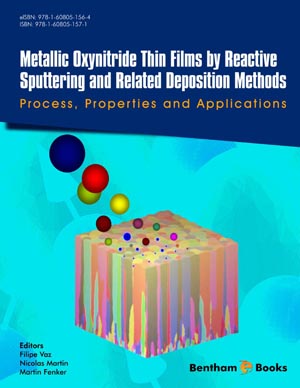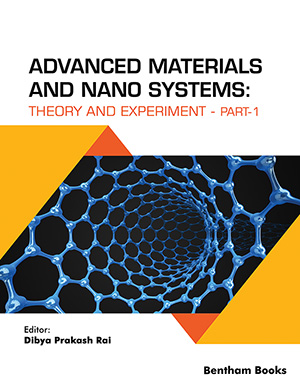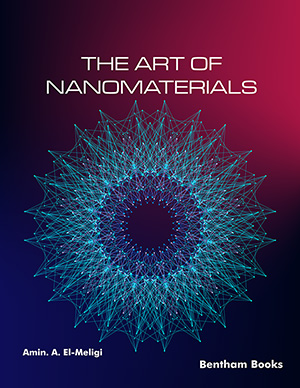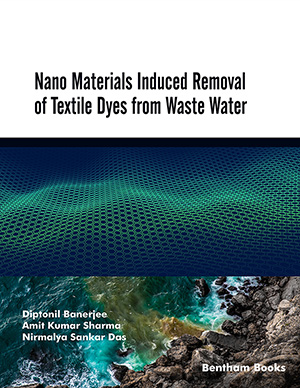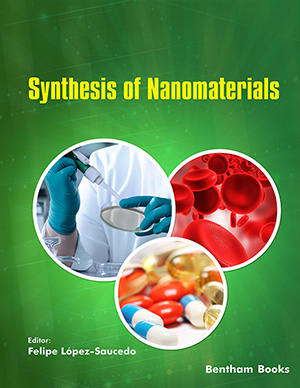Abstract
Titanium oxynitride thin films were deposited by dc reactive magnetron sputtering. The reactive gas pulsing process, namely RGPP, was used to modify the oxygen and nitrogen concentrations in titanium oxynitride thin films TiOxNy. Nitrogen gas was constantly introduced into the sputtering process, whereas oxygen mass flow rate was periodically changed vs. time. A rectangular pulsing pattern was implemented and the duty cycle α, defined from the introduction time of oxygen, was systematically modified from 0 to 100 % of the pulsing period T maintained at 45 s. In this way, the chemical composition of TiOxNy sputter deposited coatings was tuned from pure metallic titanium nitride TiN to titanium dioxide TiO2 through various metalloid concentrations, i.e., x varied from 0 to 2.0 and y inversely reduced from 1.0 to 0. Such tuneable chemical compositions led to a gradual and smooth transition of optical and electrical properties of the films. Optical transmittance in the visible range was null for oxygen contents lower than 30 at. % and was higher than 75 % for the highest oxygen contents (> 60 at. %). A progressive evolution of the transmittance was observed for intermediate oxygen contents. Similarly, electrical conductivity was close to 105 S. m-1 for the lowest oxygen concentrations and dropped down to few S m-1 as oxygen concentration increased. This gradual evolution from metallic to semiconducting and finally dielectric behaviours correlates well with the occurrence of f.c.c. NaCl-type phase in an amorphous TiO2 matrix. This f.c.c. phase vanishes as a function of the oxygen concentration in the films leading to an amorphous structure and typical dielectric characteristics.
Keywords: Titanium oxynitride, reactive magnetron sputtering, reactive gas pulsing process (RGPP), duty cycle, rectangular pulsing pattern, tuneable chemical composition, ternary diagram, gradual transition, metallic titanium nitride, titanium dioxide, crystalline structure, dielectric, semiconducting behaviour, spectroscopic ellipsometry, optical transmittance, refractive index, extinction coefficient, electrical conductivity, temperature coefficient of resistance (TCR), activation energy.


